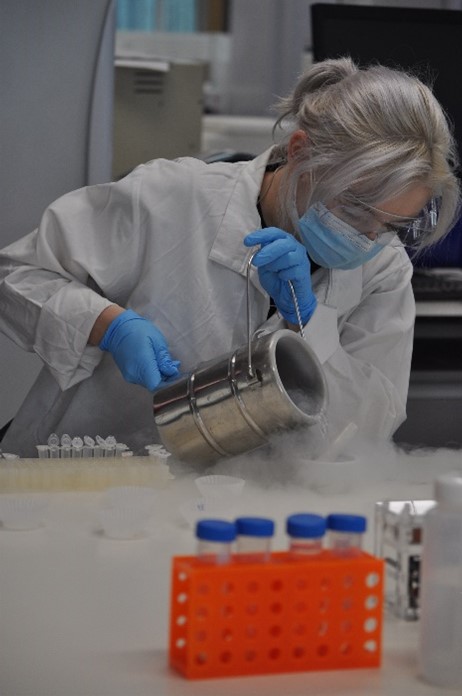
Project Details
Project Overview
This research aims to understand the oomycete pathogen, Phytophthora cinnamomi from within. It focuses on inducing drought stress to the pathogen and extracting and quantifying biomolecules, such as RNA and proteins. These biomolecules, will further the understanding of the pathogens ability to spread, infect, reproduce as well as protect itself during osmotic and salinity stress.
Polyethylene glycol (PEG) and sodium chloride (NaCl), induces osmotic stress and salinity stress, respectively. Exposure to Polyethylene glycol and sodium chloride induces drought stress in plants, hence we apply the same treatments to the pathogen.
The first part of the research focuses on understanding the pathogen as an individual, observing mycelial growth, zoospore production, reactive oxygen species (ROS) levels, as well as proteomic and transcriptomic data.
The second part of the research focuses on using transcriptomics and proteomics to understand how Phytophthora cinnamomi during the infection of a model plant, Nicotiana benthamiana, may react to the exposure of drought stress.
These two avenues converge when comparing biological processes involved in the pathogens ability to continue infection, recover or protect itself from multiple stressors.
This research is currently being done at the University of Canterbury, School of Biological Sciences.
Why This Matters
Exploring the internal aspects of the pathogen Phytophthora cinnamomi in isolation, without reliance on a plant host, is an understudied research area.
This research will pave the way to better understand how the pathogen might function and survive harsh climate change conditions.
Consequently, this might lead to research focusing on hijacking mechanisms to improve pathogen mitigation techniques or bolstering plant immunity.
- To quantify and quality virulence associated genes and proteins in Phytophthora cinnamomi during the exposure of drought stress.
- To quantify and qualify hydrogen peroxide or reactive oxygen species (ROS) quenching enzymes present in Phytophthora cinnamomi during the exposure of drought stress.




